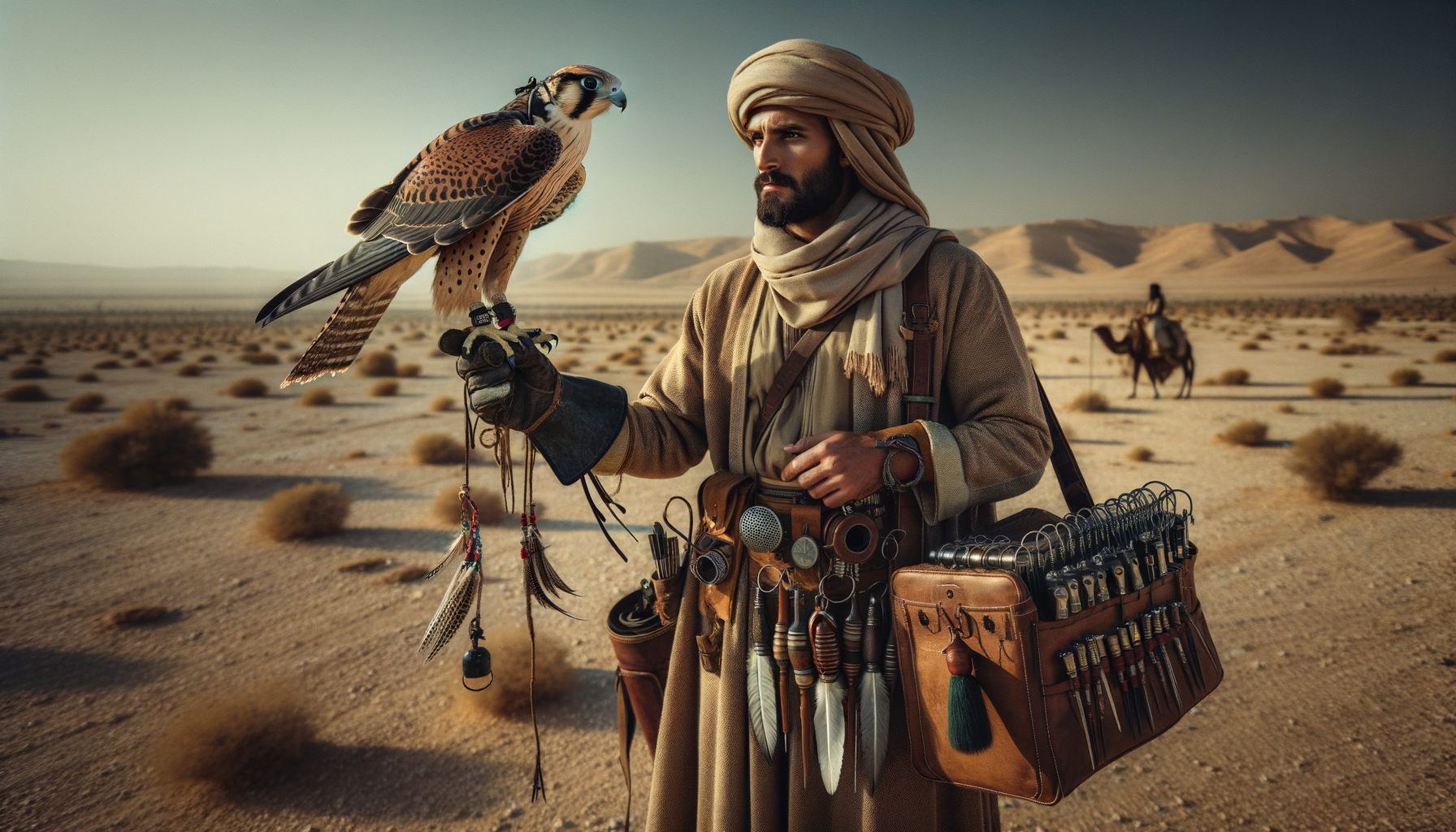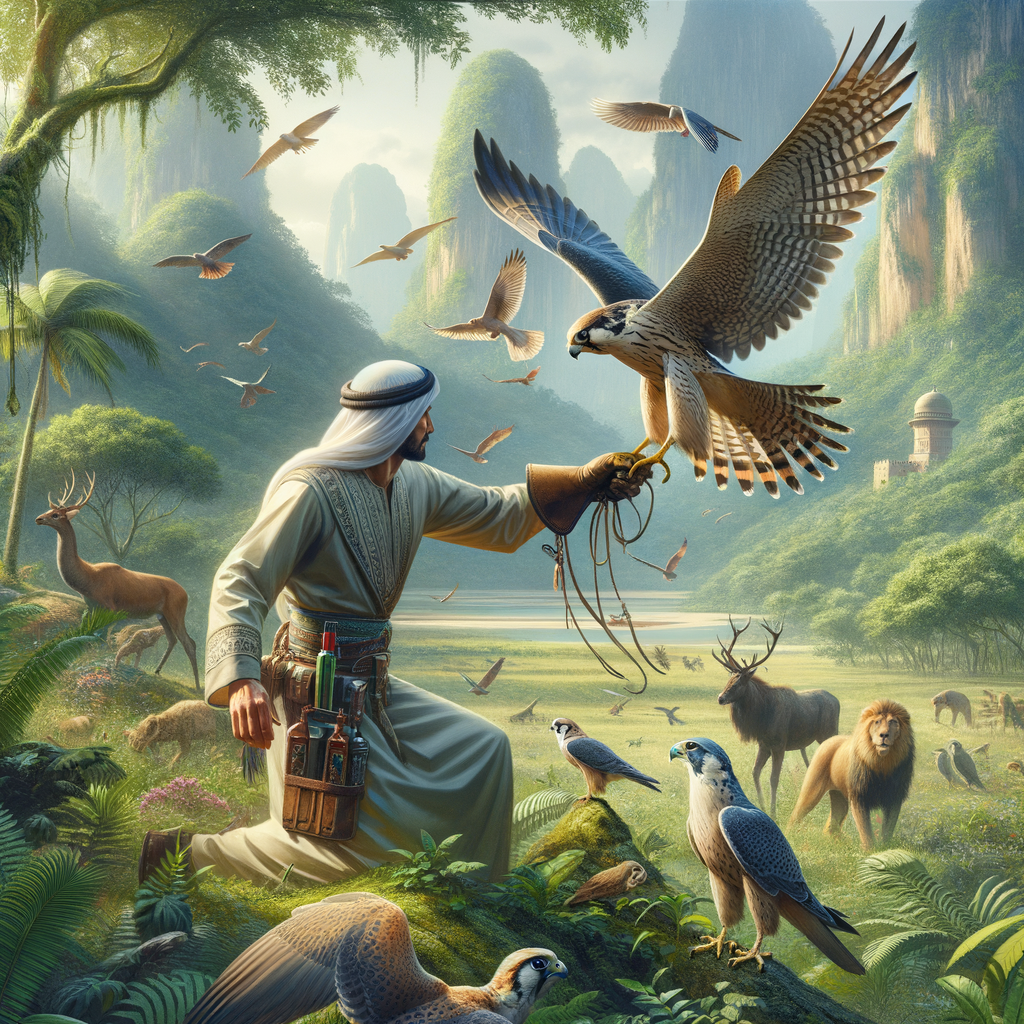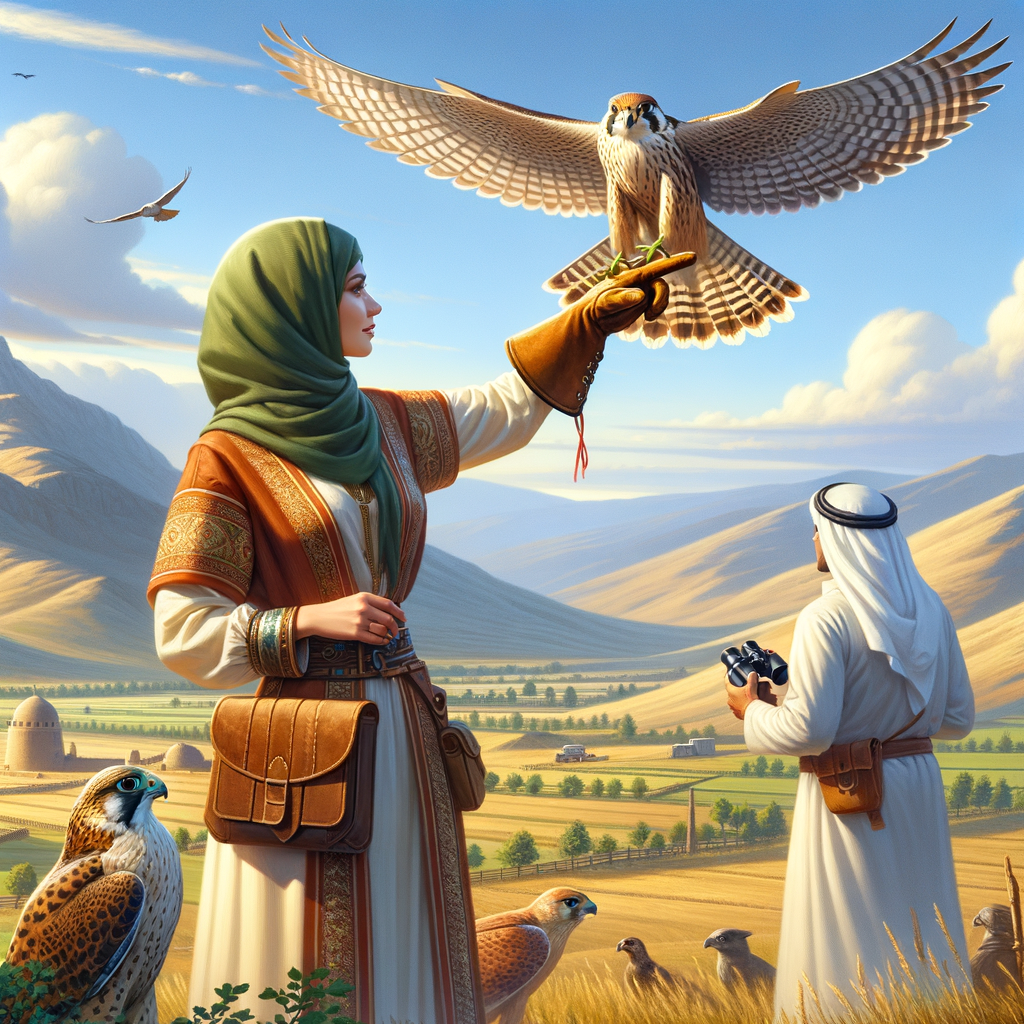Key Highlights from the History of Falconry
- Ancient Beginnings: Falconry dates back over 4,000 years, beginning in Mesopotamia and spreading to ancient cultures like Egypt, China, and Japan.
- Medieval Popularity: It flourished in medieval Europe, especially among nobility, as a symbol of status and sophistication.
- Cultural Significance: Different cultures used falconry for hunting and as a symbol of power and prestige, influencing art, literature, and traditions.
- Technological Advances: Over time, advances in training techniques and equipment improved the practice, making it more effective and humane.
- Conservation Efforts: Modern falconry plays a crucial role in wildlife conservation, habitat protection, and species recovery programs.
- Global Spread: Falconry is practiced worldwide, with different regions contributing unique methods, birds of prey, and training practices.
- UNESCO Recognition: The practice was recognized by UNESCO in 2010 as an Intangible Cultural Heritage, highlighting its importance and legacy.
- Educational Value: Falconry helps in educating people about birds of prey, their habitats, and the importance of ecological balance.
- Modern Sports: It’s now appreciated as both a sport and an art, blending traditional skills with contemporary wildlife management.
- Community and Connection: Falconry fosters a deep connection between humans and nature, celebrating trust and cooperation with majestic birds of prey.
Discovering the Fascinating History of Falconry
Hello there, young adventurers and curious minds! ð Have you ever wondered what it’s like to have a bird of prey as a friend and partner in the wilderness? Welcome to a journey through time with Learn Falconry, where we uncover the ancient art of falconry. Imagine falconry as a wise old Irish storyteller, weaving tales by the warm glow of a hearth fire. Just like those cherished tales from across the Emerald Isle, the history of falconry is filled with adventure, bravery, and an unbreakable bond between humans and their feathered friends.
As we dive into this captivating story, you’ll find out how people from different eras and cultures trained majestic birds like falcons, hawks, and eagles to help them hunt and protect their lands. But the story doesn’t end there! By learning about this age-old practice, you’ll discover why it’s still important today. So, grab a comfy seat and get ready to fly through the pages of history with Learn Falconry. The adventure is just beginning!
The Fascinating Journey Through Falconry History
Falconry history spans thousands of years and stretches across multiple continents. The practice of training birds of prey has enchanted generations, from ancient civilizations to modern enthusiasts. Let’s dive deep into the origins of falconry and discover how it has evolved over time, providing a fascinating blend of tradition and skill.
The Origins of Falconry
The origins of falconry are somewhat shrouded in mystery due to its practice in many ancient cultures. One of the earliest known instances dates back to Mesopotamia around 2,000 BC. Ancient falconry in these regions involved the use of birds of prey for hunting and was a sign of social status and prowess.
Learn more about ancient falconry origins
Ancient Falconry Across the Globe
Ancient falconry wasn’t limited to just one region. It spread across the globe, each culture adding its unique touch. In ancient Egypt, falcons were associated with gods and were considered sacred. The Middle Eastern cultures also valued falconry highly, often displaying their birds during hunts and public events.
Did Vikings Do Falconry?
One intriguing question often asked is, “Did Vikings do falconry?” Evidence suggests that they did. Falconry in Scandinavia, while not as widespread as in other cultures, did see some practice. The Vikings, often known for their seafaring and raiding, also enjoyed hunting with birds of prey, including hawks and falcons.
The History of Falconers
So, what is the history of falconers? Falconers through the ages have been a dedicated and passionate group of individuals who have honed their skills over centuries. Medieval Europe is particularly well-known for its elaborate falconry practices, where falconry books and manuals emerged to guide enthusiasts on the best techniques and equipment. The medieval European falconry practices were so detailed that they influenced training methods that are still in use today.
Falconry’s Influence on Culture
Falconry has deeply influenced various cultures around the world. In Asia, particularly in China and Japan, falconry has been practiced for centuries as both a sport and an art. Each culture’s unique falconry techniques and the types of falcons used highlight their rich history and deep appreciation for this ancient practice.
Explore more about falconry in different cultures here.
Tools and Equipment Through the Ages
Falconry wouldn’t be possible without proper equipment. From ancient hoods and jesses to modern telemetry systems, the development of falconry equipment has been remarkable. Early falconers created the basics, such as gloves and perches, while contemporary advancements have introduced high-tech gear.
Learn more about falconry equipment.
The Role of Falconers Today
Falconers today continue to honor the traditional practices while embracing modern techniques. Many falconry enthusiasts view their practice not only as a sport but also as a way to contribute to conservation efforts. Organizations and clubs around the world promote ethical and sustainable practices ensuring the survival of this ancient tradition.
For those interested in becoming a part of this centuries-old tradition, getting started with falconry for beginners provides a great starting point.
Falconry’s rich history, stretching from ancient times to the present, showcases the enduring bond between humans and birds of prey. As we look to the future, the principles and traditions of falconry continue to inspire new generations of falconers worldwide.
Discover more fascinating details about the history of falconry here.
Ancient Origins of Falconry
Falconry, the ancient art of hunting with birds of prey, stretches back to nearly 5000 years ago. The precise origins are shrouded in mystery, but what we know from historical evidence is truly fascinating.
Historical Evidence
One of the earliest known depictions of falconry comes from ancient petroglyphs and artifacts from the Hittites and Persians. This sport is believed to have originated in Central Asia and spread through various regions via trade and cultural exchanges.
Key Timelines and Figures
| Period | Region | Evidence & Contributions |
|---|---|---|
| 2205 BC | China | Falcons given as royal gifts in the Heian dynasty |
| 13th century BCE | Ancient Egypt | Stelae depicting falconry scenes |
| 5000 years ago | Central Asia | Petroglyphs & artifacts |
Falconry in the Middle Ages
The Middle Ages marked a significant era for falconry, especially in Western Europe and the British Isles.
Privileged Pursuit
During this time, falconry was highly popular among the privileged classes and nobility. Birds of prey were not just tools for hunting but also symbols of status and wealth. Falcons and hawks were often traded or gifted as peace tokens among the upper elite.
Decline and Revival
Despite its popularity, the sport saw a decline with the advent of the shotgun and the enclosure of open lands in the 17th century. However, lingering interest kept traditional knowledge alive through aristocratic amateurs and professional falconers. The real revival occurred in the 1970s with the reprinting of old treatises and the advent of new media coverage.
Medieval Falconry Clubs
| Country | Organization | Description |
|---|---|---|
| England | British Falconers’ Club | Founded in early 20th century |
| USA | North American Falconers Association | Established in 1961 |
Modern-Day Practice of Falconry
Today, falconry is a global practice enjoyed by enthusiasts worldwide. Here’s how it looks in the modern context:
Global Spread
Falconry has strongholds in Britain, the United States, Central Asia, and the Persian Gulf states. Notably, the sport is also practiced in India, Pakistan, and various other regions.
Falconry and Conservation
Modern falconers are deeply involved in conservation efforts. These include protecting raptor populations and habitats, and initiatives like the Saudi National Center for Wildlife Development’s rewilding program and the Saudi Falcons Club’s Hadad program.
Conservation Projects
| Project Name | Country | Purpose |
|---|---|---|
| Rewilding Program | Saudi Arabia | Protect raptor habitats and populations |
| Hadad Program | Saudi Arabia | Sustainable hunting practices |
Sustainable Practices in Falconry
Modern falconry emphasizes sustainable practices, including the use of captive-bred birds and promoting ecologically sustainable hunting alternatives.
Key Sustainable Initiatives
- Captive-Bred Birds: Many modern falconers utilize birds bred in captivity for falconry, reducing the impact on wild populations.
- Eco-Friendly Hunting: Programs encourage hunting methods that do not deplete local wildlife resources.
Key Organizations Promoting Sustainability
| Organization | Focus Area |
|---|---|
| International Association for Falconry | Preservation, sustainable wildlife use |
These points reveal a rich history of falconry, from its ancient origins to its modern practices and conservation efforts, demonstrating the enduring legacy of this fascinating art form.
The Timeless Art of Falconry
Falconry is an incredible part of human history that stretches back thousands of years. Ancient civilizations like the Hittites and Persians, and even prehistoric societies, depicted falconry in their art, showing us how deeply rooted this practice is. During the Middle Ages, falconry became a sport for kings and noblemen in Europe, but its popularity dwindled with the invention of firearms. Thankfully, the 1970s saw a resurgence in interest, and today, falconry is practiced worldwide, with significant communities in Britain, the United States, and Central Asia.
Modern falconry isn’t just about the sport; it also focuses on conservation and sustainability. Many falconers today help to protect raptor populations and their habitats. For example, organizations like the Saudi National Center for Wildlife Development work on rewilding programs. Falconers also use captive-bred birds and support ecological hunting alternatives to promote sustainability.
The tradition of falconry, once a necessity for survival, has evolved into a modern pastime that blends ancient skills with contemporary conservation efforts. It’s a testament to humanity’s enduring connection with these majestic birds of prey and our ongoing commitment to preserving both our heritage and the natural world. Falconry’s rich history and its ongoing role in conservation make it a fascinating and important practice worth cherishing.



